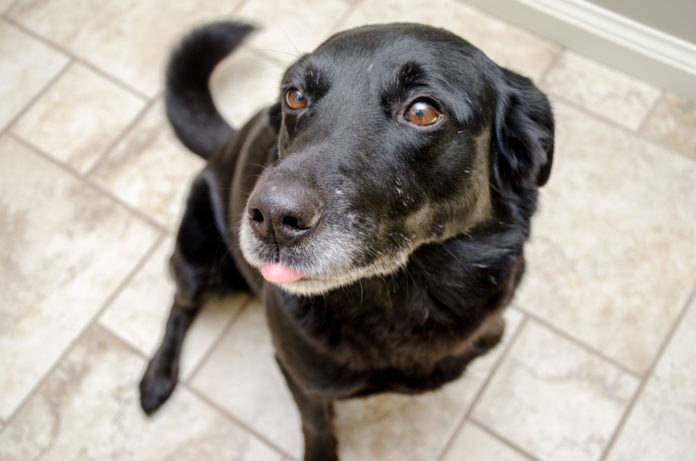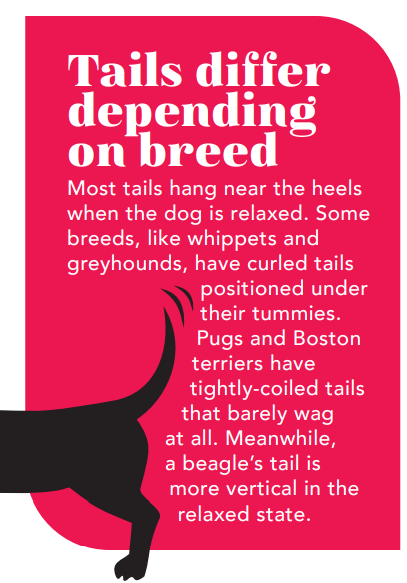What does your dog’s wagging tail really mean?

A wagging tail doesn’t always indicate that your dog is happy. Learn how to read your canine companion’s “tail language”.
We usually assume that when a dog wags his tail, it means he’s happy. And much of the time, that’s true. But a wagging tail can indicate several other emotions as well. “It can be a sign of curiosity, anxiety, or excitement, and in some scenarios, even aggression,” says dog trainer Katie Cook. Understanding your dog’s “tail language” gives you a better insight into his emotional state at any given moment.
Why do dogs wag their tails?
Tail wagging is an effective form of communication for dogs. They also communicate through body language, of course, but tails are generally very flexible and visible, and canine vision is adapted more to detecting movement than colors or details. So dogs have evolved to express and interpret different tail wags.
What is his tail telling you?
- A slow wag could mean the dog is feeling insecure.
- A tail held higher than normal could mean that something has caught your dog’s attention.
- A tail held lower and between the legs could indicate fear or anxiety.
- A tail wagging enthusiastically from side to side is generally a friendly greeting.
 “In certain cases, when a dog is wagging his tail in a super flat or straight position, it could be a warning,” Katie adds. “I call it a flag tail – a flat, level, back-and-forth kind of wag. It means the dog is uncomfortable. A lot of happy dogs will wave their tails like a helicopter, all around, all over the place. However, a stiff tail wag could be concerning. If two dogs are approaching one another, and their tails are super stiff, it could mean ‘I’m uncomfortable, I’m challenging you.’
“In certain cases, when a dog is wagging his tail in a super flat or straight position, it could be a warning,” Katie adds. “I call it a flag tail – a flat, level, back-and-forth kind of wag. It means the dog is uncomfortable. A lot of happy dogs will wave their tails like a helicopter, all around, all over the place. However, a stiff tail wag could be concerning. If two dogs are approaching one another, and their tails are super stiff, it could mean ‘I’m uncomfortable, I’m challenging you.’
“It just depends on what they’re doing in the moment,” Katie continues. “Every dog is different and every dog has his signals. We also have to be able to interpret tail wagging with other body language signs, whether it’s ear posture, shoulder stiffness, or raised hair.”
Left or right tailed?
There’s even evidence that the direction a dog favors when wagging his tail may be a mood indicator. A dog wagging his tail more to the right side of his body tends to be more relaxed, while a dog wagging his tail to the left may be stressed or anxious.
Bottom line
“The most important thing people need to know is that a wagging tail doesn’t always mean a happy dog,” says Katie. Learning your dog’s “tail language” will help you understand what he’s really feeling.



